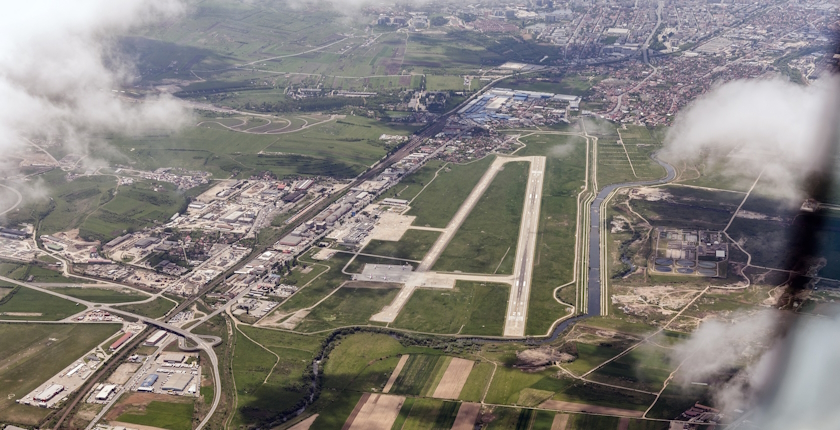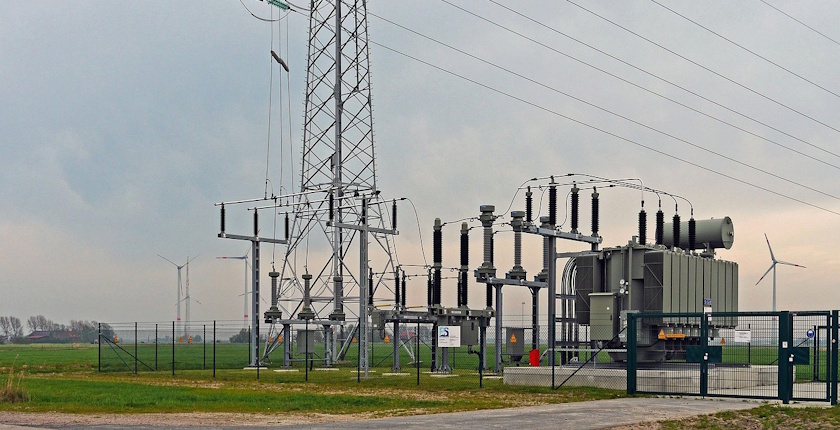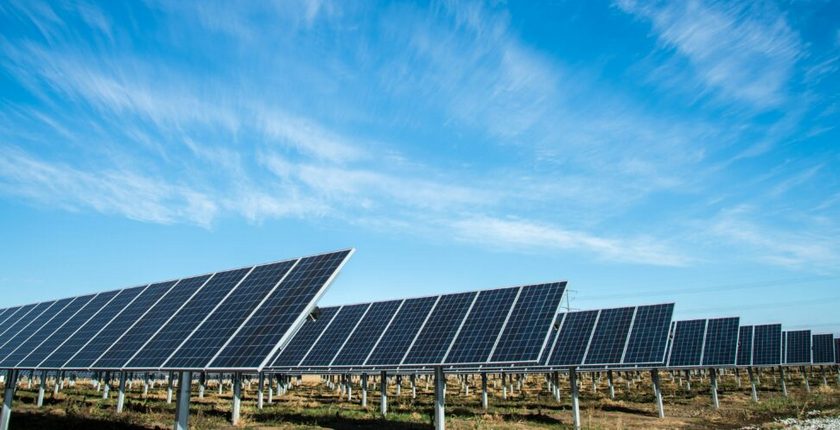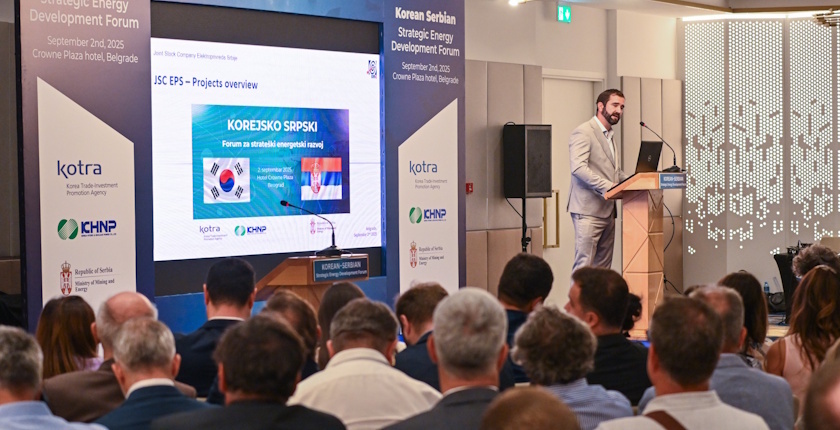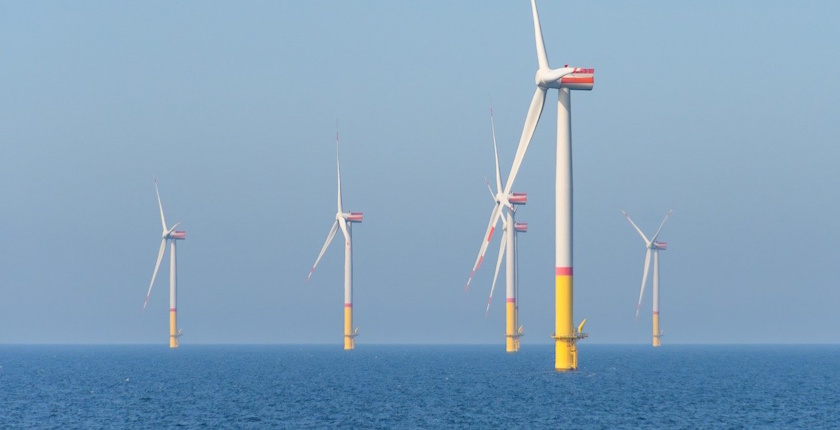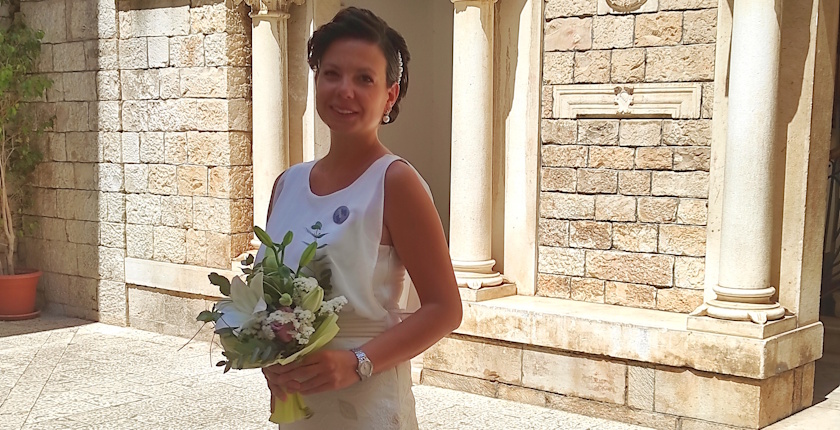
Eco bride Milica Lukić celebrates love with sustainable wedding
Weddings are often associated with celebration, luxury, and significant resource consumption. However, the example of Milica Lukić, a researcher and environmental activist, shows that a celebration of love can be just as festive and emotional while remaining sustainable — without wastefulness or harm to the environment.
For many people, a wedding is one of the most important days of their lives. Choosing a dress, a suit, a venue, food, decorations, and music are just some of the elements that require detailed planning and organization. However, bringing a large number of people together in one place, along with traditional customs, often comes with a darker side: high carbon emissions, food waste, and excessive resource use. Still, there is another way.
Milica Lukić, a researcher at the Faculty of Geography, University of Belgrade, and a member of the WISE Serbia network, has demonstrated that a wedding can be organised with sustainability and care for the planet in mind. In addition to her academic career, Milica is also known as a dedicated environmental activist and an advocate for a healthier environment.
“When we talk about adopting more eco-friendly practices in everyday life, most people start with reusable shopping bags, refillable water bottles, or separating packaging for recycling. The next step is rethinking. Rethinking whether we can do something differently, which might take a little more time and planning but ultimately brings numerous benefits — for us as individuals, for society, and for nature,” Milica emphasizes.
It was precisely this mindset that inspired Milica to make her special day sustainable while also supporting the local community.
“The thought ‘less is more’ guided me throughout the entire process. That’s why I want to inspire others with my story so that, in the future, we have more examples like this,” she says.
The dress can wait for the right moment.
Choosing the right dress, the centerpiece of the celebration and likely the most eye-catching detail, can be a challenging task. It’s common for people to spend several hundred euros on this special garment, but Milica opted for a second-hand dress instead.
“The dress is always the biggest challenge, but luckily, there’s @retro.to.the.rescue, where I’ve been buying second-hand clothes for years. I bought the dress earlier and waited for the right moment,” Milica explains.
Retro to the Rescue is a charity-driven initiative, with all proceeds from sales donated to animal welfare organizations.
Love without a golden wedding ring
A wedding outfit is often paired with carefully selected jewelry made of precious metals and gemstones. However, behind the sparkling pieces lies a darker side. The jewelry industry is linked to numerous ethical and environmental issues: child labor, human rights violations, conflict financing, pollution, and environmental destruction.
That’s why Milica decided to use what she already had. “I’m most proud that I managed to resist the pressure when it came to wedding rings because gold reminds me of exploitation, mining, pollution — everything we are fighting against. Love doesn’t need a golden ring,” says Lukić, sending her support to activists in Eastern Serbia who have long been battling the consequences of mining and the influence of mining companies.
Responsible choices in beauty products protect the environment
The eco-conscious approach to Milica’s wedding was also reflected in her choice of makeup. The cosmetics industry produces around 120 billion units of packaging every year, most of which is non-recyclable plastic. It also relies on animal-derived ingredients and toxic chemicals such as parabens and phthalates.
Sustainable makeup involves products that are not tested on animals, contain no animal-derived ingredients, use natural pigments, and come in recyclable packaging. There are even zero-waste makeup options, such as refillable lipsticks packaged in metal or glass containers.
Milica chose a minimalist, sustainable approach — using vegan mascara and lipstick — and had her hair styled at a small local salon, explaining that she enjoys supporting small businesses, especially those owned by women.
She also bought her bouquet at a local market from an elderly woman selling flowers. “The night before, I tried making my own bouquet from flowers I picked in the neighborhood, but by morning, it had wilted. Even water didn’t help. Still, it won’t go to waste — it’ll continue its life in compost,” Milica says.
Sustainability reflects respect for nature, people, and the community
Instead of hosting a big wedding celebration, Milica chose a small family lunch at a local restaurant, with a vegan and vegetarian menu.
Through her example, Milica has shown that love doesn’t have to be celebrated according to traditional norms. What matters most is making the day authentic and aligned with the values we live by. Her wedding is a reminder that sustainability isn’t about giving things up — it’s about celebrating in a way that reflects respect for nature, people, and the community.

